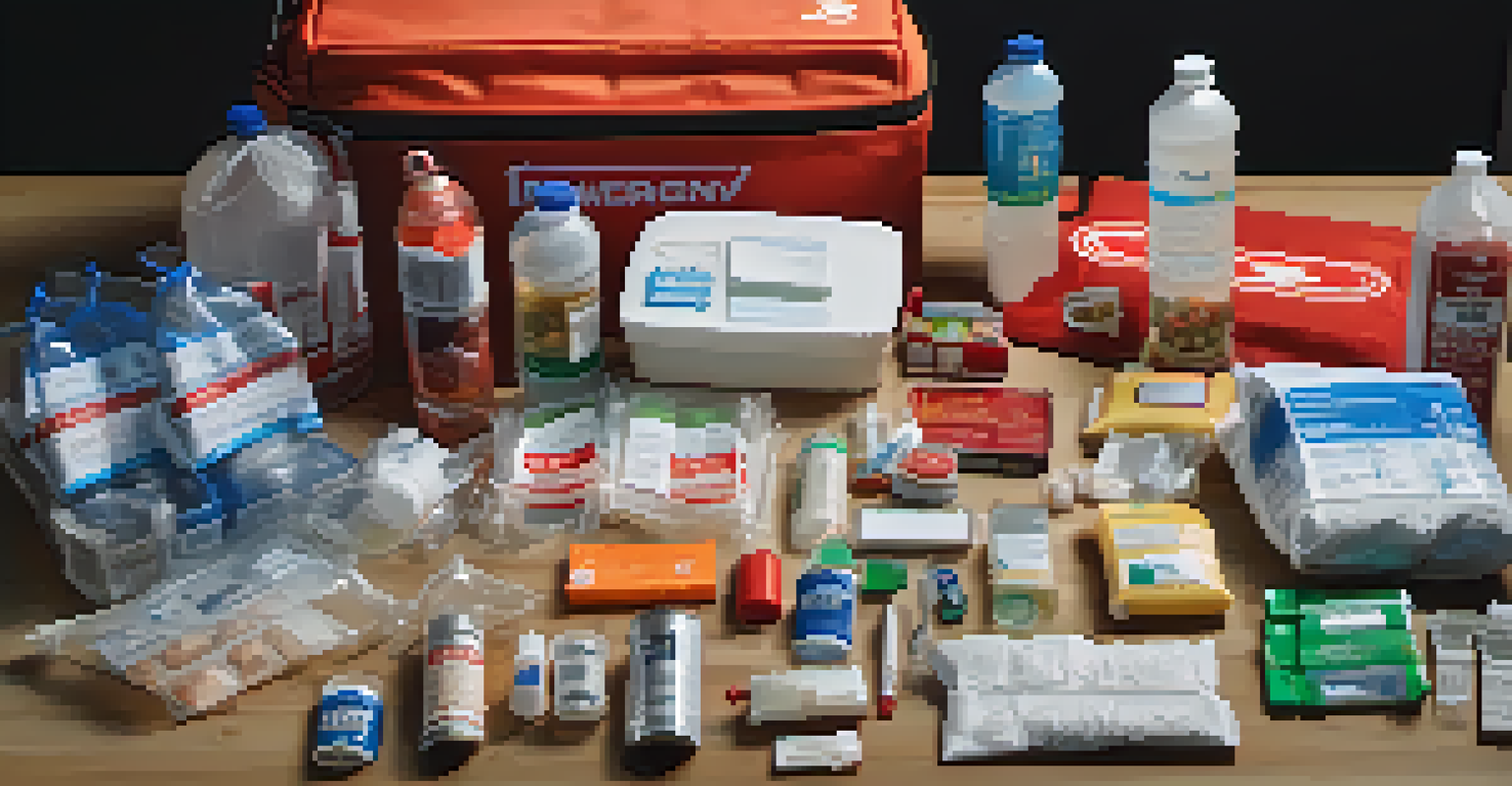How to Create a Family Emergency Plan in Jersey City

Understanding the Importance of an Emergency Plan
Having a family emergency plan is essential for ensuring safety during unexpected events. In Jersey City, where natural disasters and emergencies can occur, being prepared is crucial. An effective plan helps everyone in your family know what to do, where to go, and how to communicate during a crisis.
By failing to prepare, you are preparing to fail.
Think of your emergency plan as a safety net; it’s there to catch you when life throws you a curveball. Whether it's a severe storm, a fire, or even a health emergency, knowing you have a plan in place can provide peace of mind. This preparation can make all the difference in reducing panic and confusion when every second counts.
As you begin to create your plan, involve every family member in the process. This involvement ensures that everyone understands their role and feels empowered to act, which can strengthen family bonds and promote a sense of teamwork in tough situations.
Assessing Potential Risks in Your Area
Before diving into the specifics of your emergency plan, take some time to assess the potential risks specific to Jersey City. This could include flooding, hurricanes, or even industrial accidents. Understanding what threats you’re most likely to face will help tailor your plan to address those specific situations.

For example, if you live in a flood-prone area, you might focus on evacuation routes and emergency contacts who can provide shelter. You can also consult local resources, such as the Jersey City Office of Emergency Management, for insights on common hazards in your neighborhood. This knowledge allows you to prepare accordingly.
Create a Family Emergency Plan
Having a well-thought-out emergency plan is essential for ensuring family safety during unexpected events.
Additionally, recognize that risks can evolve over time due to climate change or urban development. Regularly review and update your risk assessment to ensure your emergency plan remains relevant and effective, adapting as your community grows and changes.
Establishing Communication Channels
Communication is a vital component of any emergency plan. In the event of a crisis, having a clear strategy for how your family will stay connected can alleviate stress and confusion. Designate a primary and secondary method of communication, such as cell phones or a family meeting point.
In preparing for battle, I have always found that plans are useless, but planning is indispensable.
Consider creating a group chat or using a family app that keeps everyone informed in real-time. This can be especially helpful if phone lines are down or networks are overloaded. Make sure to practice using these communication methods so that everyone knows how to reach out and receive updates promptly.
Moreover, ensure that your family members know how to reach out to each other, especially if they’re at different locations when an emergency strikes. Establishing a plan for regular check-ins can also foster a sense of security, knowing that you have a reliable way to communicate during chaotic times.
Designating Meeting Places
Identifying safe meeting places is crucial for family members to regroup during an emergency. Choose a primary location close to your home, such as a neighbor’s house, and a secondary location further away, like a local park or community center. This gives your family options based on the situation at hand.
In addition to physical locations, consider establishing virtual meeting points, such as a specific social media page or group chat. This can serve as a digital rallying point where family members can check in if they’re unable to meet in person. It’s an effective way to stay connected, especially if travel routes are compromised.
Assess Local Risks Regularly
Understanding the specific risks in Jersey City, such as flooding or hurricanes, allows you to tailor your emergency plan effectively.
Make sure to communicate these meeting places to all family members and practice how to get there from various locations. This practice helps everyone feel more comfortable and confident, reducing uncertainty during an actual emergency.
Preparing an Emergency Kit
An emergency kit is a crucial element of your family emergency plan. This kit should contain essential supplies that can support your family for at least 72 hours. Items like water, non-perishable food, flashlights, batteries, first-aid supplies, and personal medications should all be included.
Think of your emergency kit as your family’s survival toolbox. Just like you wouldn’t want to venture out without the right tools for a DIY project, you don’t want to be caught without essential supplies in a crisis. Tailor your kit to meet your family’s specific needs, such as including items for pets or children.
Regularly check and update your emergency kit to ensure that food is not expired and supplies are in good condition. Developing a habit of reviewing your kit every six months can keep you prepared and ensure that everyone knows where it’s stored.
Creating a Family Emergency Plan Template
Having a written emergency plan can serve as a reference point for your family during stressful times. Consider creating a simple template that outlines critical information, including contact numbers, meeting places, and emergency procedures. This document can be stored in multiple locations, such as online and in printed form.
Involve everyone in the creation of this template to ensure it meets the needs of all family members. Encourage open discussions about what to include, so that everyone feels heard and valued. This collaborative approach can also help reinforce the importance of the plan.
Practice and Update Your Plan
Regularly reviewing and practicing your emergency plan helps ensure everyone knows their roles, boosting confidence in a crisis.
Once the template is complete, practice going over it as a family. Familiarity with the plan can make a significant difference when it comes time to implement it, allowing everyone to act quickly and confidently during an emergency.
Reviewing and Practicing Your Plan Regularly
Creating an emergency plan is just the first step; regular reviews and practice are essential to ensure its effectiveness. Schedule family drills where you simulate various types of emergencies, like fires or severe weather, so everyone knows their roles and responsibilities. This practice can help to reinforce the plan and build confidence.
Additionally, take time to review your plan at least once a year or whenever there’s a significant change in your family’s situation, such as a new baby or moving to a new home. Keeping your plan updated ensures that it remains relevant and practical for your current circumstances.

Encouraging feedback from family members after drills can help identify areas of improvement. This collaborative approach can foster a sense of teamwork and further enhance your family's readiness for any emergency.